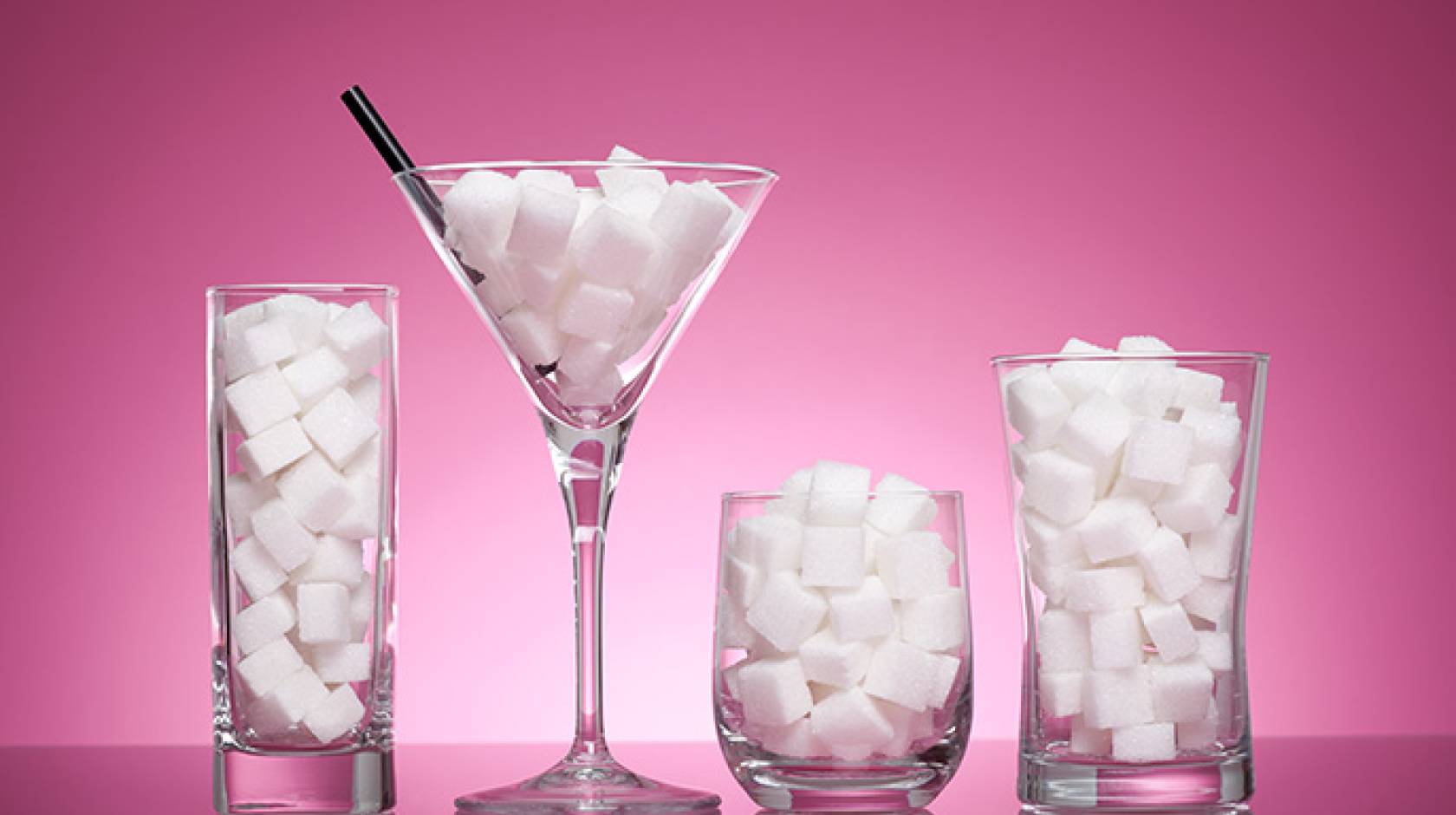Alec Rosenberg, UC Newsroom

Americans, watch your sugar intake.
That’s one key takeaway from the U.S. government’s new dietary guidelines, which for the first time recommend a clear limit on added sugar of no more than 10 percent of daily calories.
For many people, a single sugary soda per day could put you over the limit.
The Dietary Guidelines for Americans, updated every five years based on the latest advances in nutritional science, serve as a basis for federal nutrition policy and help set the tone for how Americans should eat. The 2015-2020 guidelines, published last week, recommend a “healthy eating pattern” with limited added sugar and saturated fat, less salt, and more fruits, vegetables and whole grains.
Four University of California experts weigh in on what consumers should know about the new guidelines.
Kimber Stanhope, UC Davis
Stanhope is an associate research nutritional biologist at UC Davis and a scientist for the SugarScience research and education initiative. Her work focuses on investigating the effects of sugar consumption on the development of metabolic disease.

UC Davis
On the recommendation for added sugar: “I’m definitely relieved that the new recommendation is for not exceeding 10 percent of calories. In 2010, when the guidelines’ upper limit on added sugar was left at 25 percent of calories, I was very disappointed and actually surprised. In August 2009, the American Heart Association announced that women should not exceed 100 calories per day of added sugar and men should not exceed 150 calories per day of added sugar. To have one group of experts saying women should not exceed 100 calories of added sugar – that’s less than one can of soda – and the other saying a woman can drink as much as three cans a day, made no sense at all. It was a victory for health that they did reduce it from 25 percent down to 10 percent.”
On the recommendation for beverages: “They are recommending high-nutrient drinks such as non-fat milk and they say we need to be careful with 100 percent juice and full-fat milks. These suggestions make sense. We need a lot more data. Just how much better is fruit juice than soda? Many researchers think they are equally problematic and many researchers think fruit juice is a healthier choice. To the best of my knowledge, there have been only two studies comparing the two.”
Biggest adjustment for consumers: “I think the guideline to eat more whole fruits and vegetables is incredibly important – if everybody would concentrate on that, health would improve immensely. The other big adjustment is making an all-out effort to eliminate as much added sugar as possible – that’s not just from beverages but also from candy and cookies.”
What’s missing: “I think they made changes that are very reasonable based on the knowledge that we have. It would be great if we had better nutrition data.”
Most important takeaway: “Eat more fruits and vegetables and less added sugar.”
Laura Schmidt, UC San Francisco
Schmidt is a professor of health policy, lead investigator on the UCSF-led SugarScience research and education initiative, and serves on multiple subcommittees for the UC Global Food Initiative. Her research helped inspire UCSF’s Healthy Beverage Initiative, which phases out the sale of sugar-sweetened beverages at UCSF.

UC San Francisco
On the recommendation for added sugar: “I think it’s really promising. These guidelines impact many of our federal food programs serving low-income populations, who are disproportionately at risk for metabolic diseases such as diabetes that are linked to excessive sugar consumption. These programs will now need to live within the 10 percent calorie limit. That means less sugar. This is saying you need to feed these people a healthy diet. It’s a huge win for public health.”
On the recommendation for beverages: “Most Americans understand the easiest, fastest way to lower your added sugar is to reduce consumption of sugary beverages. But the disparities between the haves and have nots are increasing. You could call this phase two of the sugar wars. Phase one was getting overall consumption to go down. Now we need to get healthy alternatives to low-income communities of color – they’re the populations most at risk.”
On the recommendation for protein: “Public health got a win on sugar, but it lost on red meat. It’s unfortunate that the advisory panel’s recommendations (to cut back) on red meat didn’t make it in the guidelines.”
Biggest adjustment for consumers: “Get their consumption of sugary drinks below one a day, and we need to really be watching those coffee drinks. Read the labels. Anytime you’re buying a bag, box, bottle or can, you should be looking on the back and seeing how much sugar is in it. If you’re consuming a product with 20 or 30 grams of sugar for one serving, you should be concerned.”
What’s missing: “I think the committee the next time could review and consider more carefully the evidence that the World Health Organization looked at, which led them to a 5 percent conditional recommendation (as a limit for sugar consumption). We’re weaning a nation off sugar. It used to be a condiment and now it is a staple. The reality is nobody needs added sugar in their diet. Of course, we like added sugar and should be able to enjoy it. The question is what’s the right limit? Even a lower guidance might be better.”
Most important takeaway: “In a normal 2,000-calorie diet, the quantity of sugar recommended by the federal government for a whole day is less than what’s in a 12-ounce can of soda. If you’re drinking a soda a day, you’re putting your health at risk.”
Jennifer Falbe, UC Berkeley
Falbe is a postdoctoral researcher in public health nutrition at UC Berkeley. She has conducted research on Berkeley’s first-in-nation soda tax.

UC Berkeley
On the recommendation for added sugar: “That is a really important way in which the guidelines have improved. This can have important policy implications when a specific limit is provided. This pertains to both federal and local policy and even institutional policies in the workplace and school setting.”
On the recommendation for protein: “What’s missing is specific food-based guidance on achieving a healthy eating pattern. The Dietary Guidelines Advisory Committee’s scientific report specifically calls out what dietary pattern has evidence for being healthier – one that is higher in vegetables, fruit, whole grains, low/non-fat dairy, seafood, legumes and nuts and lower in red and processed meats, sugar and sugar-sweetened beverages, and refined grains. But the key recommendations of the guidelines don’t mention anything about red and processed meats or sugar-sweetened beverages.”
Biggest adjustment for consumers: “Reducing added sugar in the diet, especially from sugar-sweetened beverages.”
What’s missing: “What’s missing in the guidelines’ key recommendations is recommending reduced consumption of red and processed meat and sugar-sweetened beverages. It seems that it would be helpful to call out the foods and drinks that people should be having less of. For instance, sugar-sweetened beverages are the largest source of added sugar in the American diet. While the guidelines do recommend limiting these beverages and choosing water as a primary beverage, this advice is buried elsewhere in the text.”
Most important takeaway: “The guidelines have improved in important ways by recommending a limit to the amount of added sugar consumed, by shifting the focus to healthy eating patterns and by lifting the limit on percentage of calories from total fat. Unsaturated fat can have health benefits.”
Lorrene Ritchie, UC Agriculture and Natural Resources
Ritchie directs UC ANR’s Nutrition Policy Institute and serves on multiple subcommittees for the UC Global Food Initiative. Her work focuses on nutrition policy research, including efforts to promote drinking water as a key obesity-prevention strategy such as seeking to add an icon for water on the U.S. Department of Agriculture’s MyPlate food guide.

UC Agriculture and Natural Resources
On the recommendation for added sugar: “The science regarding the health risks of a high-sugar diet is strong. Not only is sugar associated with chronic disease risk and obesity, but it also displaces foods known to protect and promote health.”
On the recommendation for beverages: “The Nutrition Policy Institute (NPI) has been working over the past year to elevate water in the guidelines. The guidelines’ recommendation to substitute water for sugary drinks is based on solid science. These beverages are the single biggest source of added sugars for our country’s kids – and this guidance is explicit and unambiguous and will boost our work in promoting zero-calorie drinking water as the beverage of choice. We made it to the outfield, but we’re not yet on home plate: MyPlate. This guidance is presented in a way that gives few Americans an opportunity to see it: on a tip sheet that explains how to use the components of MyPlate ‘to create your own healthy eating solutions — MyWins’. The public health community and the new National Drinking Water Alliance, coordinated through NPI, will build on the potential in this fine-print message by continuing drinking water education, promotion and advocacy.”
Biggest adjustment for consumers: “Take a bite out of the added sugars in your diet by drinking plain water instead of sugary beverages. This one simple lifestyle change can be an effective response to the latest nutrition science in the new Dietary Guidelines for Americans.”
What’s missing: “The 2015 Dietary Guidelines Scientific Advisory Committee recommended incorporating the idea of environmental sustainability into the guidelines, but this advice was not included in this year's final document. Future versions of these guidelines should incorporate the best science regarding the interplay between population dietary advice and the food systems that supply the foods available for consumption. The 2015 guidelines have renewed the call to action to all sectors of society to support healthy eating patterns. In order for Americans to meet the federal dietary recommendations, our nation must create physical and social environments where healthy choices are the most accessible, convenient, affordable, desirable and sustainable. The guidelines acknowledge the important role industry as well as government and private-sector programs and policies play in achieving this goal.”
Most important takeaway: “Drink water instead of sugary drinks.”

